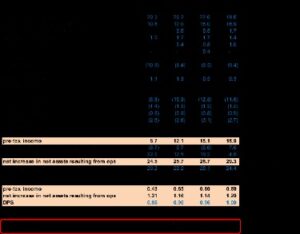
Then, you’ll need levered free cash to enter the ending balance from your bank statement and the ending date. Next, review the list of transactions, ensuring that each one matches the transactions on your bank statement. You will then mark each transaction as cleared, either by ticking the boxes or by selecting Reconcile Now to clear all the transactions at once. Complete the reconciliation by clicking Reconcile Now to verify and finalize the process. This process is crucial for ensuring the financial integrity of a business.

Wise Business Account Limits US Guide
Make sure you enter all transactions for the bank statement period you plan to reconcile. If there are transactions that haven’t cleared your bank yet and aren’t on your statement, wait to enter them. This verification process is essential in identifying and rectifying any irregularities, providing a clear and accurate portrayal of the company’s financial standing. With its ability to integrate seamlessly into QuickBooks, reconciliation streamlines the financial management process, ensuring compliance and transparency. If you adjusted a reconciliation by mistake or need to start over, reach out to your accountant. These kinds of changes can get complicated and unbalance your accounts.
To see all of your adjustments on the list, you can review a Previous Reconciliation report for the reconciliation you adjusted. This will show you cleared transactions and any changes made after the transaction that may not show in your discrepancies. To reconcile, simply compare the list of transactions on your bank statement with compare and contrast job-order and process costing systems what’s in QuickBooks.
In this comprehensive guide, we’ll walk you through the step-by-step process of reconciling accounts in QuickBooks, ensuring your financial accuracy and peace of mind. It plays a crucial role in ensuring the financial accuracy and integrity of a company’s records. By reconciling regularly, businesses can detect and rectify any discrepancies, minimizing the risk of errors and fraudulent activities. This process directly impacts the balance sheet accounts, transactions, and banking activities.
- By marking transactions as cleared, it becomes easier to track which ones have been verified by the bank, minimizing the risk of overlooking any discrepancies.
- Accessing the reconcile tool in QuickBooks Online is the initial step in the reconciliation process, allowing users to review and match the financial records with the bank statement.
- The journal entry goes into a special expense account called Reconciliation Discrepancies.
- When you reconcile, you compare your bank statement to what’s in QuickBooks for a specific period of time.
- In the realm of financial management, reconciling accounts stands as a fundamental task.
- We’ll delve into reconciling previous months, rereconciliation, and marking transactions as reconciled in QuickBooks Online.
Step 3: Start your reconciliation
It provides a clear and accurate picture of the company’s financial health, enabling informed decision-making. This is a crucial step in the accounting process as it helps in identifying and rectifying any discrepancies, errors, or missing transactions that may have occurred during the earlier months. By comparing the transactions recorded in QuickBooks with the actual bank statements, businesses can ensure that their financial records accurately reflect the true state of their accounts from previous months.
Review Transactions
If QuickBooks is not connected to online accounts, the statements will not be loaded. Select the account you wish to reconcile from the Account drop-down menu. Reconciling is an important task that you should carry out regularly. For example, if the payee is wrong, you can click on the transaction to expand the view and then select Edit. After you reconcile, you can select Display to view the Reconciliation report or Print to print it. The journal entry goes into a special expense account called Reconciliation Discrepancies.
This process involves meticulously reviewing each transaction entry in QuickBooks and cross-referencing it with the corresponding entry in the bank statement. By performing this comparison, discrepancies such as missing transactions, duplicate entries, or incorrect amounts can be readily identified. This not only helps in maintaining accurate financial records but also serves as a crucial reconciliation step to ensure that the company’s books reflect the true financial position. This process is crucial for ensuring that all transactions recorded in the accounting system align with the actual activity in the bank account. By marking transactions as cleared, it helps to confirm that the funds have been successfully transferred and received, providing a clear trail of verified financial activities.
After confirming the match between the records and the bank statement, accounting profit it is essential to review any discrepancies and make necessary adjustments. From accessing the reconcile tool to marking transactions as cleared, we’ve got you covered. We’ll delve into reconciling previous months, rereconciliation, and marking transactions as reconciled in QuickBooks Online. If you’re ready to streamline your reconciliation process and gain a deeper understanding of how to reconcile in QuickBooks, read on to become a reconciliation pro. In the realm of modern business, leveraging technology to optimize financial management has become an imperative.